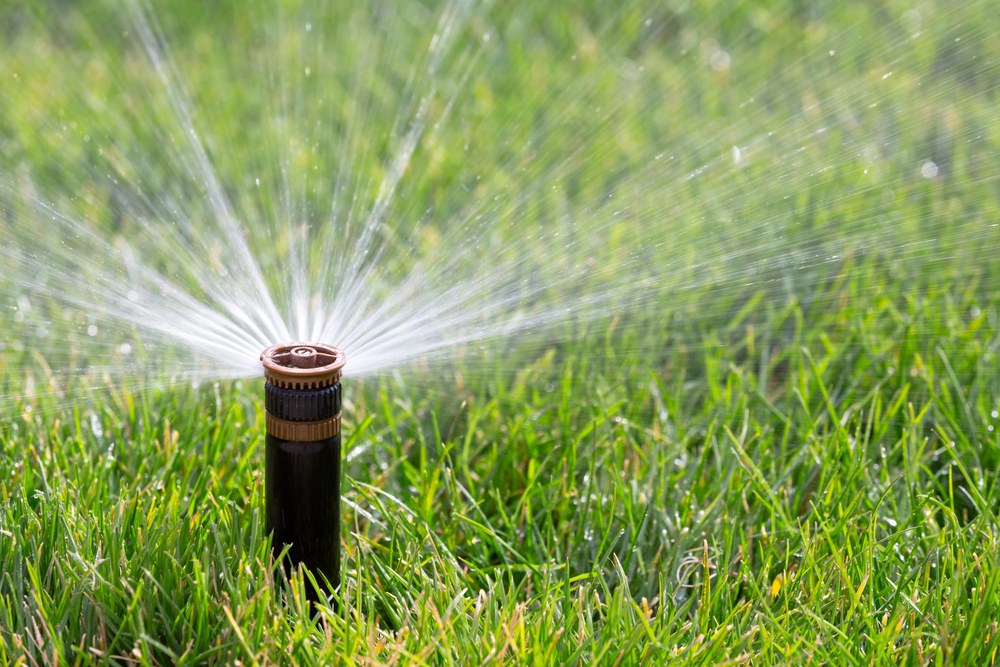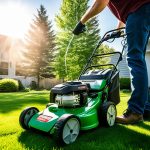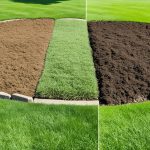When summer brings long dry spells and scorching temperatures, it’s no surprise that many lawns start to struggle. Grass can fade from green to golden brown within days, and even the most well-kept lawns may begin to show signs of stress.
But while heatwaves are tough on turf, there are clear, effective strategies that can help your lawn hold on to its health, or recover quickly once cooler weather returns. From watering and mowing techniques to feeding and pest control, here’s how to keep your lawn green and thriving through extreme summer conditions.
Understanding Heat Stress and Dormancy in Grass
Heat stress occurs when temperatures climb above what grass can comfortably handle, particularly when combined with low rainfall. Cool-season grasses such as ryegrass, fescue, and Kentucky bluegrass are most vulnerable during hot, dry spells, especially if they haven’t developed deep root systems.
One of the first signs of heat stress is discolouration. The grass may wilt or turn a bluish-grey before browning. Footprints may linger longer than usual, and blades may feel dry or brittle.
In response, many lawns enter a natural dormancy — a survival mechanism that allows the grass to conserve energy. Dormancy isn’t death. Most grass can survive several weeks in this state, especially if the roots remain moist. Understanding this process is essential, as overreacting with excessive water or fertiliser can cause more harm than good.
1. Watering Wisely: Timing and Techniques
Watering is the single most important factor in protecting your lawn during a heatwave, but it has to be done properly.
Water early in the day
The best time to water is early morning, ideally between 5am and 9am. At this time, the air is cooler, and the wind is usually calm, meaning less evaporation and more moisture reaching the roots. Watering in the evening can leave grass wet overnight, increasing the risk of fungal disease.
Deep, infrequent watering
Rather than a daily sprinkle, aim for two or three deep soakings a week. Watering to a depth of 10–15cm encourages roots to grow downwards, making the lawn more resilient in dry conditions. Light, shallow watering does the opposite — it trains roots to stay near the surface, where the soil dries out faster.
Use wetting agents if needed
In some soils — particularly sandy or hydrophobic types — water struggles to soak in, leading to patchy dryness. Wetting agents help break the surface tension, allowing moisture to penetrate more evenly. These are especially helpful in high-traffic areas or lawns prone to dry spots.
Test the soil
A simple way to check soil moisture is with a screwdriver or thin metal rod. Push it into the ground; if it slides in easily, moisture levels are sufficient. If there’s resistance, it’s time to water.
2. Mowing in the Heat: Best Practices
Mowing during a heatwave can either support your lawn’s health or contribute to its decline — it all depends on how it’s done.
Raise your mowing height
Longer grass blades provide natural shade to the soil, reducing surface temperatures and slowing evaporation. Most lawns should be kept at 5–7cm during summer, but in hotter areas or during peak heatwaves, 7–10cm is even better.
Never cut more than one-third
Even if the lawn looks overgrown, avoid cutting more than a third of the grass blade in a single mow. Removing too much at once causes shock, which slows regrowth and leaves the lawn more vulnerable to heat.
Keep your blades sharp
Dull mower blades tear rather than cut, which frays the ends of the grass and increases moisture loss. Regularly sharpening your blades results in a cleaner cut and a healthier lawn.
Leave the clippings
Mulching mowers or side-discharge models that leave clippings on the lawn can help retain moisture and return nutrients to the soil. As long as the clippings are short and spread evenly, they won’t smother the lawn.
Mow less frequently
In hot conditions, grass growth slows. Only mow when necessary, and skip mowing entirely during extreme heat if the lawn is showing signs of stress or dormancy.
3. Feeding Your Lawn: Summer Fertilisation Tips
Feeding your lawn in summer requires care. While nutrients are essential for growth, too much fertiliser — especially in high heat — can cause more damage than good.
Choose slow-release fertilisers
Slow-release or controlled-release products provide nutrients gradually, supporting steady growth without overwhelming the grass. Avoid using high-nitrogen fertilisers in summer, as they can burn the lawn and encourage weak, fast growth that is easily scorched.
Focus on potassium
Potassium plays a vital role in strengthening cell walls and improving heat and drought tolerance. Fertilisers with a balanced or slightly higher potassium content (the ‘K’ in N-P-K ratios) help support your lawn through stressful conditions.
Try seaweed-based products
Liquid seaweed and kelp extracts are rich in trace minerals and growth hormones that can help your lawn manage heat stress and recover faster. They’re also gentle enough to use during summer without causing burn.
Apply fertiliser carefully
Always fertilise during the cooler parts of the day — early morning or late afternoon. Ideally, apply just before rainfall or before irrigating, to help nutrients soak into the soil and prevent runoff.
4. Weed and Pest Control in Summer
Weeds thrive in weakened lawns, and summer pests can quickly undo months of good lawn care. Staying on top of both is key during heatwaves.
Control weeds early
Weeds such as bindii, clover, dandelion, and oxalis can spread rapidly. Treat them before they flower or set seed. Spot spraying with a selective herbicide is effective for smaller infestations, while manual removal works well for isolated plants.
Watch for grubs and armyworms
Lawn grubs and armyworms are most active in summer and can destroy entire patches overnight. Look for brown patches that lift easily or seem to appear suddenly. If confirmed, use an appropriate insecticide such as Acelepryn, which is safe for beneficial insects but effective against common pests.
Use pre-emergent herbicides
Pre-emergent weed control is a preventative method that stops weed seeds from germinating. Apply these in late spring or early summer to reduce future outbreaks.
Prevent fungal disease
Hot, humid weather creates the perfect environment for fungal problems like dollar spot, brown patch, and rust. Avoid overwatering, and mow at the correct height to improve airflow. If needed, apply a fungicide suitable for residential turf.
5. Protecting Your Lawn from Extreme Heat
During extended periods of 30°C+ (86°F+), even a well-prepared lawn can struggle. These measures offer extra protection.
Monitor for signs of dehydration
If footprints remain visible on your lawn after walking, or the grass doesn’t spring back, it’s likely water-stressed. Increase watering slightly, but stick to deep, infrequent sessions rather than light, daily watering.
Create temporary shade
Use portable shade sails, umbrellas, or shade cloth to shield small, vulnerable areas — especially if you’ve recently seeded or treated the lawn.
Improve soil health long-term
Aeration helps relieve compaction and allows moisture, air, and nutrients to reach the roots. Incorporate organic matter such as compost to increase the soil’s water-holding capacity.
Reduce traffic
Try to limit lawn use during heatwaves. Repeated foot or pet traffic stresses the grass and compacts the soil, especially when the turf is already under strain.
6. Preparing for Autumn Recovery
Summer lawn care doesn’t end when the heat fades — in fact, late summer and early autumn are ideal for setting up a full recovery.
Aerate compacted areas
If the lawn has thinned or dried out over summer, core aeration allows water and nutrients to reach the roots and encourages new growth. This is particularly useful after sustained heat stress.
Overseed bare patches
If dormancy has left your lawn patchy, overseeding with a matching grass variety helps restore density. Make sure to water the area consistently during germination.
Apply an autumn fertiliser
A slow-release fertiliser applied in early autumn helps replenish nutrients lost during summer and prepares the lawn for cooler weather ahead. Choose a formula with a balanced N-P-K ratio or one slightly higher in potassium.
Monitor regrowth
As temperatures cool and rainfall increases, dormant grass will usually green up again on its own. Monitor regrowth, and avoid the temptation to over-treat unless clearly necessary.
Final Thoughts
A green lawn in summer isn’t the result of luck — it’s the outcome of smart, seasonal care. By understanding how heat affects your grass, adjusting your mowing and watering habits, and supporting your lawn through stress, you give it the best chance to stay healthy when the temperatures rise.
Whether you’re dealing with mild drought or an extended heatwave, these techniques are proven to help lawns stay stronger, recover faster, and look better for longer.





